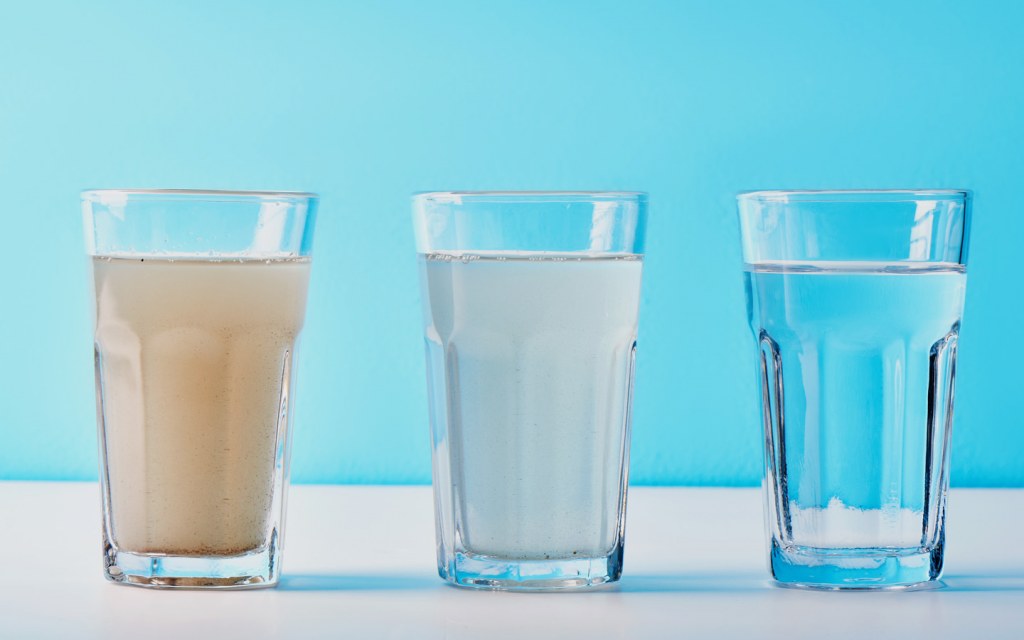It is important that the water you drink is clean and free from bacteria and other contaminants as much as possible. The quality of the water that comes out of your tap is likely regulated by a government body and may not necessarily need further purification, depending on your standards. However, there are many sources of water that must be cleaned before consuming. Stagnant water, certain well waters and other sources of unknown origin should always be cleaned before consumption.
Good thing there are abundant water sources across most of the globe, and multiple ways to disinfect the water. Which method of water processing is right for different situations? Follow along here and find out.
Water Purification Tablets
Water purification tablets are a very easy to use water purification method. They are little tablets that come in a small bottle, offering you many doses of purification in a tiny package that’s easy to carry or store. They’re also pretty inexpensive, but they have a limited shelf life. To use one of these tablets, you simply drop the recommended number of tablets into your water container and wait for them to work their magic. They won’t filter out any sediment, so it’s a good idea to try to filter that out still if you want to drink the water, but all of the microorganisms and bacteria that could be harmful will be eradicated.
Use Iodine
Another classic, iodine or chlorine dioxide is a great option for purifying water, particularly to get rid of those pesky bacteria and viruses.
However, be careful!
While various forms of iodine can be used to clean water, the crystal form, in particular, can prove to be dangerous to play around with. Excess sodium can increase your blood pressure and your risk for heart disease and stroke.
However, if you want to use iodine, but find that taste just too much to overcome, a cool trick to eliminate the palate problem is adding a form vitamin C to the water (just make sure you do so after it has finished purifying!).
Ultra-Violet light
One type of small, portable, modern water filter is a UV filter. This small lightbulb gets inserted into your water and emits a strong ultraviolet light that kills off anything in the water. Your water is completely safe for drinking after an ultraviolet treatment, but it still may have sediment in it since this doesn’t filter sediment from the water. You’ll also have to be sure to check on the battery life often because it won’t do you much good if the batteries are dead when you desperately need drinking water!
The SODIS Method
Now we come to the other light method and a technique that sounds like it came straight from a science textbook (…or a Marvel comic).
SODIS simply stands for Solar Disinfection or the solar disinfection process (3). Don’t get intimidated though, it turns out to be way less complex than anything we’ve talked about so far.
Water in a plastic bottle traps the heat of the sun and heats up, while the UVA rays help to zap the bad stuff.
The glaring issue here, if you hadn’t already noticed – is that heating up water in a plastic bottle can have some pretty nasty side effects. Leaching chemicals, in particular, can make this a less-than-desirable option.
Distillation
Distillation is a water purification method that utilizes heat to collect pure water in the form of vapor. This method is effective by the scientific fact that water has a lower boiling point than other contaminants and disease-causing elements found in water. Water is subjected to a heat source until it attains its boiling point. It is then left at the boiling point until it vaporizes. This vapor is directed into a condenser to cool. Upon cooling, vapor is reversed into liquid water that is clean and safe for drinking. Other substances that have a higher boiling point are left as sediments in the container.
This method is effective in removing bacteria, germs, salts and other heavy metals such as lead, mercury and arsenic. Distillation is ideal for people who have access to raw, untreated water. This method has both advantages and disadvantages. A notable disadvantage is that it is a slow process of water purification. In addition, it requires a heat source for the purification to work. Although cheap sources of energy are being developed, distillation remains a costly process of purifying water. It is only ideal (effective and least costly) when purifying small quantities of water (It is not ideal for large scale, commercial or industrial purification).
Conclusion
It’s no longer safe to simply drink any water you find. Even though mountain streams may look incredibly refreshing and inviting, it’s what you can’t see that can cause you harm. In an emergency situation, clean water isn’t always available, so it pays to know how to purify some to make it safe to drink should you ever find yourself in such a predicament. Whether you choose a water filter, common home chemicals, or the tried and true method of boiling, these ways of purifying water can keep you alive when water is scarce and you need to avoid dehydration.


0 Comments